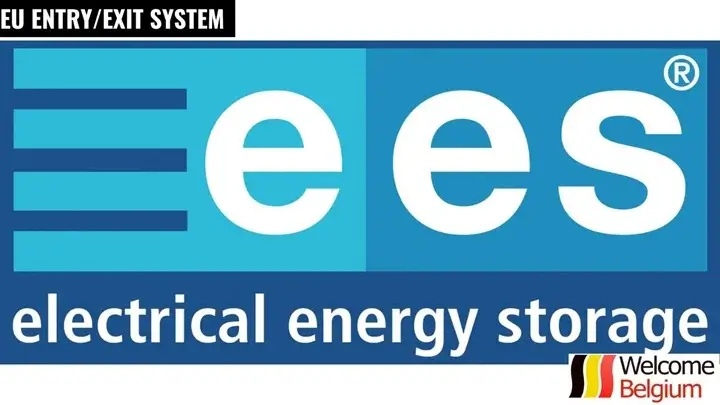The European Union is set to implement significant changes to border control in 2025–2026, aimed at enhancing security, automating processes, and combating illegal migration. Two key systems—Entry/Exit System (EES) and European Travel Information and Authorisation System (ETIAS)—will impact millions of travelers from third countries, including citizens of the UK, USA, Canada, and other visa-exempt nations. These changes will replace manual passport stamping with digital records, collect biometric data, and introduce pre-travel screening. According to the European Commission, EES will process data for approximately 1.4 billion travelers annually, while ETIAS will handle up to 30 million applications per year. Below is a detailed overview with facts, figures, and tables for maximum clarity.
What is EES and When Will It Take Effect?
The Entry/Exit System (EES) is an automated IT system designed to register the entry and exit of non-EU citizens in the Schengen Area. It eliminates the need for passport stamps, collects biometric data, and ensures compliance with the 90-day stay limit within a 180-day period, preventing overstays.
- Launch Date: October 12, 2025, with gradual implementation until April 10, 2026.
- Affected Countries: 29 Schengen states, including Austria, Belgium, Bulgaria, Croatia, Czech Republic, Denmark, Estonia, Finland, France, Germany, Greece, Hungary, Iceland, Italy, Latvia, Liechtenstein, Lithuania, Luxembourg, Malta, Netherlands, Norway, Poland, Portugal, Romania, Slovakia, Slovenia, Spain, Sweden, and Switzerland.
- Who It Applies To: Third-country nationals entering for short stays (up to 90 days), including tourists, business travelers, and transit passengers.
- Registration Process: Passport scanning, biometric data collection (four fingerprints and facial photo; only photo for children under 12), and recording of entry/exit date and location.
- Processing Time: 1–2 minutes per person, up to 30 minutes during peak periods.
- Exemptions: EU, EEA, and Swiss citizens; holders of long-term visas or residence permits; diplomats and military personnel. Children under 12 are exempt from fingerprinting.
Temporary delays are expected at borders, particularly at airports and ports like the Eurotunnel or Channel ports, where implementation will start in November 2025. The European Commission predicts a 20–30% increase in border crossing times during the initial months. There are no direct fees for EES, but indirect costs, such as transportation or insurance, may rise.
Key Aspects of EES
The EES is a comprehensive tool for modernizing border control, affecting both travelers and border authorities. It aims to enhance security and streamline procedures through automation and biometric data, reducing manual processes. The table below summarizes the system’s main features, including its objectives, technical details, and potential challenges.
| Aspect | Details | Figures/Facts |
| Purpose | Tracking entry/exit and biometrics | Processes 1.4 billion records annually |
| Biometrics | Fingerprints + facial photo | Data stored for 3 years (5 years for overstays) |
| Implementation | October 12, 2025–April 10, 2026 | 29 Schengen countries |
| Traveler Costs | Free (except indirect costs) | No direct fees |
| Risks | Border delays | Up to 30 minutes per person during peak times |
EES will improve border control accuracy, but travelers should anticipate potential queues and check the system’s status on the official EU website: travel-europe.europa.eu.
What is ETIAS and When Will It Take Effect?
The European Travel Information and Authorisation System (ETIAS) is a pre-travel screening system for citizens of visa-exempt countries entering the EU. Similar to the U.S. ESTA, it assesses security, migration, and health risks before travel. Authorization is mandatory for entry into 30 European countries.
- Launch Date: Last quarter of 2026 (tentatively October–December).
- Affected Countries: 30 countries, including the Schengen Area, Cyprus, Bulgaria, and Romania.
- Who It Applies To: Citizens of approximately 60 visa-exempt countries, such as the USA, UK, Canada, Australia, and Japan, for stays up to 90 days within 180 days.
- Application Process: Online submission via etias.europa.eu or mobile app, requiring passport details, contact information, travel history, and criminal record.
- Processing Time: 95% of applications are approved within minutes; complex cases may take up to 96 hours, or 30 days with additional documents.
- Cost: €20 for ages 18–70; free for those under 18 or over 70.
- Validity: 3 years or until passport expiration, whichever comes first.
ETIAS minimizes risks for the EU by cross-checking data with Interpol and Europol databases. Rejections may occur in 1–2% of cases, often due to criminal history. Appeals are free but may take weeks. The European Commission anticipates about 30 million applications annually, potentially straining the system in its early years.
Key Aspects of ETIAS
ETIAS is designed to pre-screen visa-exempt travelers to minimize security, migration, and health risks. It provides automated data analysis through international databases, simplifying entry but requiring advance preparation. The table below outlines the system’s key features, including application process, costs, and validity.
| Aspect | Details | Figures/Facts |
| Purpose | Pre-travel risk screening | 30 million applications per year |
| Application | Online, before travel | Processing: minutes to 96 hours |
| Implementation | Q4 2026 | 30 EU/Schengen countries |
| Cost | €20 (ages 18–70) | Free for <18 and >70 |
| Validity | 3 years | Or until passport expiration |
For a successful ETIAS application, use the official portal etias.europa.eu and apply at least 72 hours before travel.
EES and ETIAS Interconnection and Recommendations
EES and ETIAS work in tandem: ETIAS authorization is required before travel, while EES records entry and exit at the border. Together, they will cover approximately 1.5 billion border crossings annually and are expected to reduce illegal migration by 10–15%, according to EU forecasts.
- Apply for ETIAS at least 72 hours before departure.
- Use a biometric passport.
- Check status on travel-europe.europa.eu or etias.europa.eu.
- Account for potential border delays (20–50% additional time in 2025–2026).
Future Prospects
EES and ETIAS will lay the foundation for further digitization of EU border control. Plans include integration with global systems like Interpol and national registries to create a unified data-sharing ecosystem. By 2030, the EU aims to introduce mobile apps for automated ETIAS and EES status checks, reducing border processing times to 30–40 seconds. ETIAS may expand to long-term visas, and AI-driven automation for appeals is under consideration. By 2035, the systems could handle up to 2 billion border crossings annually due to growing tourism and migration. Technologies like AI-based facial recognition may ease border congestion but raise privacy concerns. Stay updated via travel-europe.europa.eu.
Pros and Cons for Immigrants and EU Residents
The introduction of EES and ETIAS significantly impacts third-country travelers and EU residents. The table below summarizes the main advantages and disadvantages for these groups.
| Group | Pros | Cons |
| Immigrants and Third-Country Travelers | – Simplified entry with ETIAS (95% approvals within minutes). – Transparent stay tracking via EES. – Reduced risk of visa record errors due to digitization. | – Additional costs (€20 for ETIAS, ages 18–70). – Border delays in 2025–2026 (up to 30 minutes during peak times). – Risk of ETIAS rejection (1–2% of cases) and complex appeals. |
| EU Residents | – Enhanced security through Interpol and Europol checks. – 10–15% reduction in illegal migration. – Faster border procedures for EU citizens (no biometrics). | – Longer queues during the transition period (20–30% additional time). – Indirect costs for infrastructure upgrades (e.g., taxes). – Data privacy risks from storing non-EU citizens’ biometrics. |
The introduction of EES and ETIAS marks a new era in EU border control, combining digitization with enhanced security. Despite temporary inconveniences like border delays and additional costs, the systems promise streamlined procedures and reduced illegal migration. Travelers are advised to prepare in advance using official resources travel-europe.europa.eu and etias.europa.eu to minimize disruptions and enjoy safe travel across Europe.




